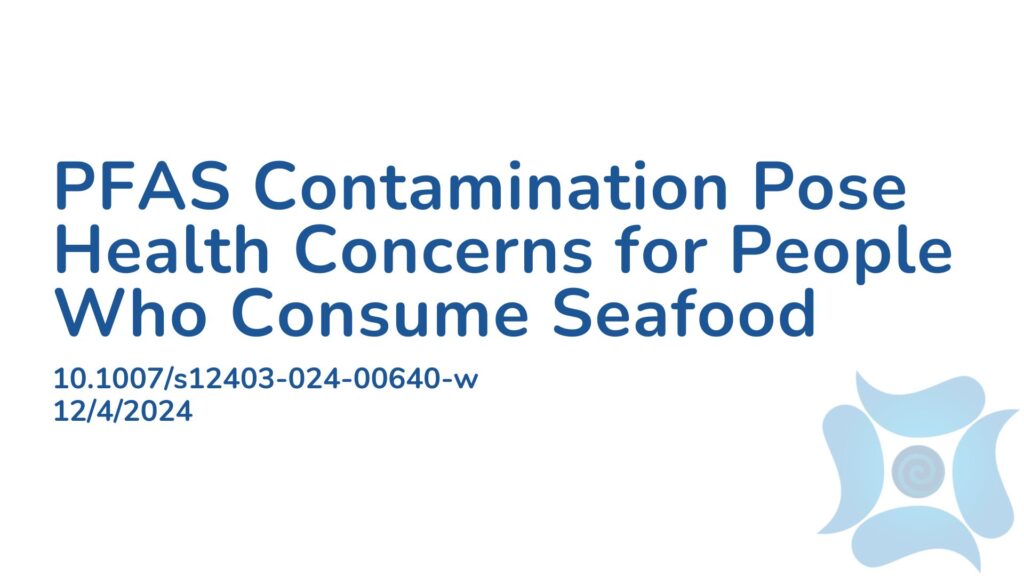Summary:
Consumption of seafood, while anti-inflammatory and nutrient dense, also poses risks. This is due to exposure to environmental contaminants like per- and polyfluoroalkyl substances (PFAS). In humans, PFAS have been linked to cancer, fetal abnormalities, elevated cholesterol levels, and disorders affecting the thyroid, liver, and reproductive system. These chemicals have built up in soil, water sources, and wildlife, with research indicating that almost every American has detectable levels of PFAS in their bloodstream. This study conducted a survey of 1,829 New Hampshire residents in June 2021 to analyze seafood consumption patterns, including types and sources, among adults and children aged 2-11 years. The researchers purchased commonly consumed seafood species from a local market and assessed the prevalence of 26 common PFAS compounds. The results showed that 95% of adults reported consuming seafood in the past year, with shrimp, haddock, salmon, and canned tuna being the most popular choices. PFAS were detected in local shrimp and lobster. These findings advocate for the implementation of environmental and health-based policies to safeguard individuals from PFAS exposure through commonly consumed seafood.
Abstract:
Fish and shellfish (“seafood”) consumption has health benefits yet is a source of exposure to bioaccumulative environmental contaminants, such as per- and polyfluoroalkyl substances (PFAS), that may cause adverse health impacts. We conducted a population-based survey of 1829 New Hampshire (NH) residents in June 2021 to determine consumption frequency, portion size, types and sources of seafood among adults and children (2–11 years old). We purchased the most commonly consumed species from a seafood market in Portsmouth, NH and quantified 26 PFAS compounds. For PFAS with available health guidance values we calculated hazard quotients to assess exposure risk from seafood consumption. Among adults, 95% reported consuming seafood within the last year and shrimp, haddock, salmon, and canned tuna were most frequently consumed. Based on consumption frequencies and meal sizes, we estimated daily seafood consumption rates for adults (median: 33.9 g/day; 95% CI 26.0, 41.8) and children (5.0 g/day; 2.3, 7.7), which are somewhat higher than National Health and Nutrition Examination Survey estimates for the Northeastern US. In local market basket shrimp and lobster, PFAS were detected at median concentrations ranging from below the limit of detection to 1.74 and 3.30 ng/g, respectively. Hazard quotients suggest that high seafood consumers may be exposed to PFAS concentrations that potentially pose a health risk. Our findings support future development of environmental and health-based policies to protect people from exposure to PFAS found in commonly consumed seafood.
Article Publication Date: 12/4/2024
DOI: 10.1007/s12403-024-00640-w




